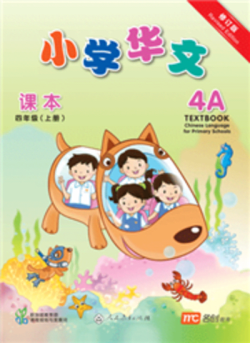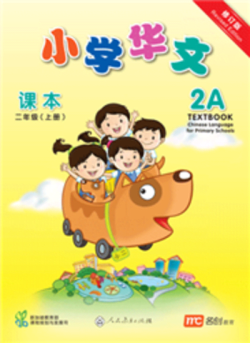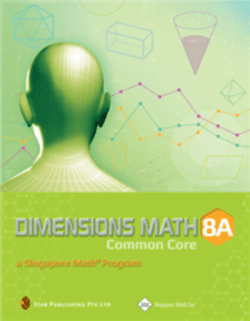Images
The Science Matters package is designed to meet the needs of learners of the 21st Century. It is written in line with the 2013 Lower Secondary Science syllabus from the Ministry of Education, Singapore. This package cultivates a sense of curiosity in students about the world around them.
Lower Secondary Science Textbook helps students discover scientific knowledge by using extensive real-life contexts. The use of purposeful visuals helps to enhance the students’ learning experience. The book also provides visuals which helps to enhance the students’ learning experience. The books also provides many opportunities for students to develop scientific literacy through a strong foundation in Science.
Help students relate to scientific concepts – Each chapter starts with a real-life context from which concepts are developed. By providing many concrete examples, students learn more easily and appreciate Science to a deeper extent as they understand how concepts are applicable to their daily life. Context-based questions in the book also help students further apply what they have learnt to real-life situations.
Engages students through visuals – Infographics are employed to explain concepts without the monotony of running text. Information is communicated clearly and concisely in this manner. In addition, fascinating pictures are used to create excitement among students and make learning more enjoyable.
Communicates big ideas in Science – Links are provided so that students make connections between concepts learnt. Theme pages also outline the interconnectivity of concepts and questions are posed at the start of each theme to frame th ebig ideas of the chapters that follow.
Encourage critical thinking – Students are asked questions that require an extension of the concepts learnt. In addition, concepts are linked to their applications in society, and students are challenged to think about the concepts at a broader level and to understand the ethical issues surrounding science and technology.
Above extract from Preface of Lower Secondary Science Textbook (reproduced with the permission of the publishers).
Lower Secondary Science Textbook A comes with an answer key (inserted).
Lower Secondary Science Matters Textbook Volume A
Thematic Concept Map
Chapter 1 The Scientific Endeavour
1.1 What is Science?
1.2 How is Scientific Knowledge Derived? — Attitudes in Science
1.3 How is Scientific Knowledge Derived? — The Scientific Method
1.4 How does Science and Technology Affect our Lives?
1.5 Safety Practices during Scientific Investigations
Theme Diversity
Chapter 2 Exploring Diversity of Matter by Its Physical Properties
2.1 Physical Properties of Matter
2.2 Density
Chapter 3 Exploring Diversity of Matter by Its Chemical Composition
3.1 Chemical Composition of Matter
3.2 What are Elements?
3.3 What are Compounds?
3.4 What are Mixtures?
Chapter 4 Exploring Diversity of Matter Using Separation Techniques
4.1 Separating Mixtures
4.2 Obtaining Drinking Water from Non-potable Water
Chapter 5 Understanding Diversity of Organisms
5.1 The Variety of Life
5.2 The Importance of Biodiversity
5.3 Classifying and Identifying Organisms Using Dichotomous Keys
Theme Pages: Diversity
Theme Models
Chapter 6 Model of Cells — The Basic Units of Life
6.1 What are Cells?
6.2 What is Inside a Typical Cell?
6.3 Forming a Multicellular Organism
6.4 Division of Labour
Chapter 7 Model of Matter — The Particulate Nature of Matter
7.1 Using the Particulate Nature of Matter as a Model
7.2 Models of States of Matter
7.3 Models of Expansion and Contraction
7.4 Models of Changes in State Optional for N(A)
Chapter 8 Model of Matter — Atoms and Molecules
8.1 The Atom
8.2 Using Models to Represent Atoms
8.3 Using a Model to Represent the Structure of an Atom
8.4 The Molecule
Chapter 9 Ray Model of Light
9.1 What is Light?
9.2 Reflection
9.3 Refraction
9.4 Dispersion of Light
9.5 Colours Optional for N(A )
Similar resources
Our company was founded on the belief that students and educators should have access to the highest quality math curriculum. We introduced the Singapore Math® method to the U.S. and beyond (U.K., Middle East, Australia) almost twenty years ago, and remain committed to sourcing and creating the best educational products available. Our dedicated team is here to help you reach your goals.
We started Singapore Math in our garage in 1998 shortly after moving back to the U.S. from Singapore, where our daughter attended local schools through the first grade. We were dissatisfied with the math materials used at her new elementary school and supplemented her schoolwork with the textbooks we brought from Singapore. We soon realized we had an excellent resource on hand and should share it with other parents and educators.
Interest in the products that we introduced to the American market grew steadily through successful school adoptions and word-of-mouth. Since those early years, the Singapore Math® method has become an established part of the national and international conversation about math education. We are proud that a math phenomenon was created in our home and that the approach has gained mainstream appeal worldwide. Schools and homeschoolers continue to successfully implement the Singapore Math® program with positive results.
We thank our early champions and loyal customers. We know you have many options and appreciate your support as we remain committed to raising the standards of math education.
Sincerely,
Dawn and Jeffery Thomas


Chinese Language Grade 6

Chinese Language Grade 4

Chinese Language Grade 3

Chinese Language Grade 2

Chinese Language Grade 1














